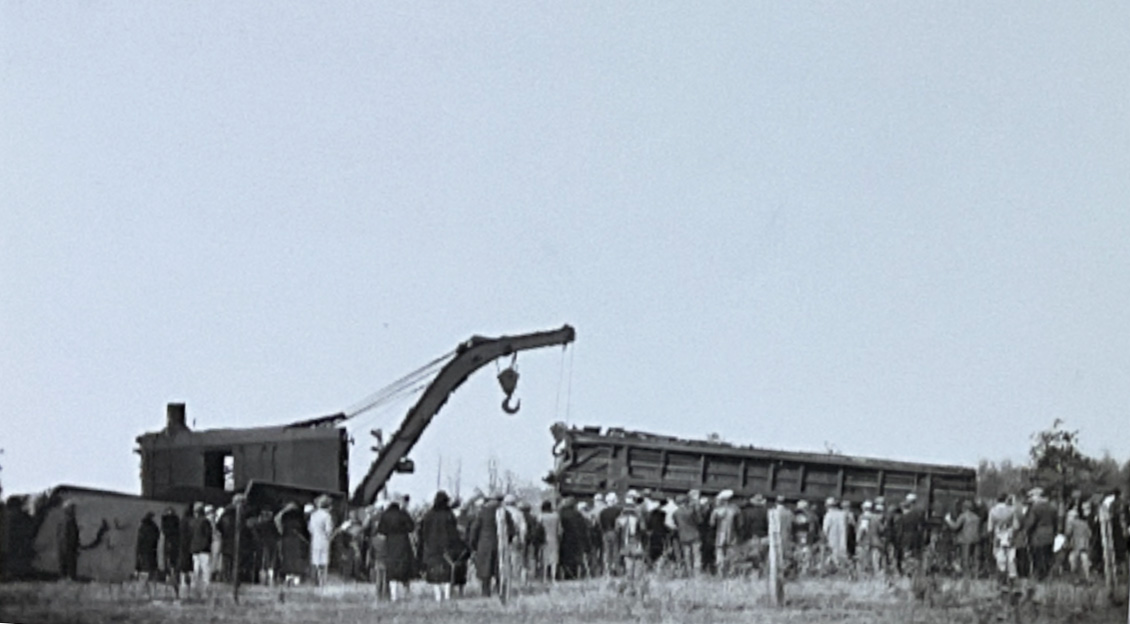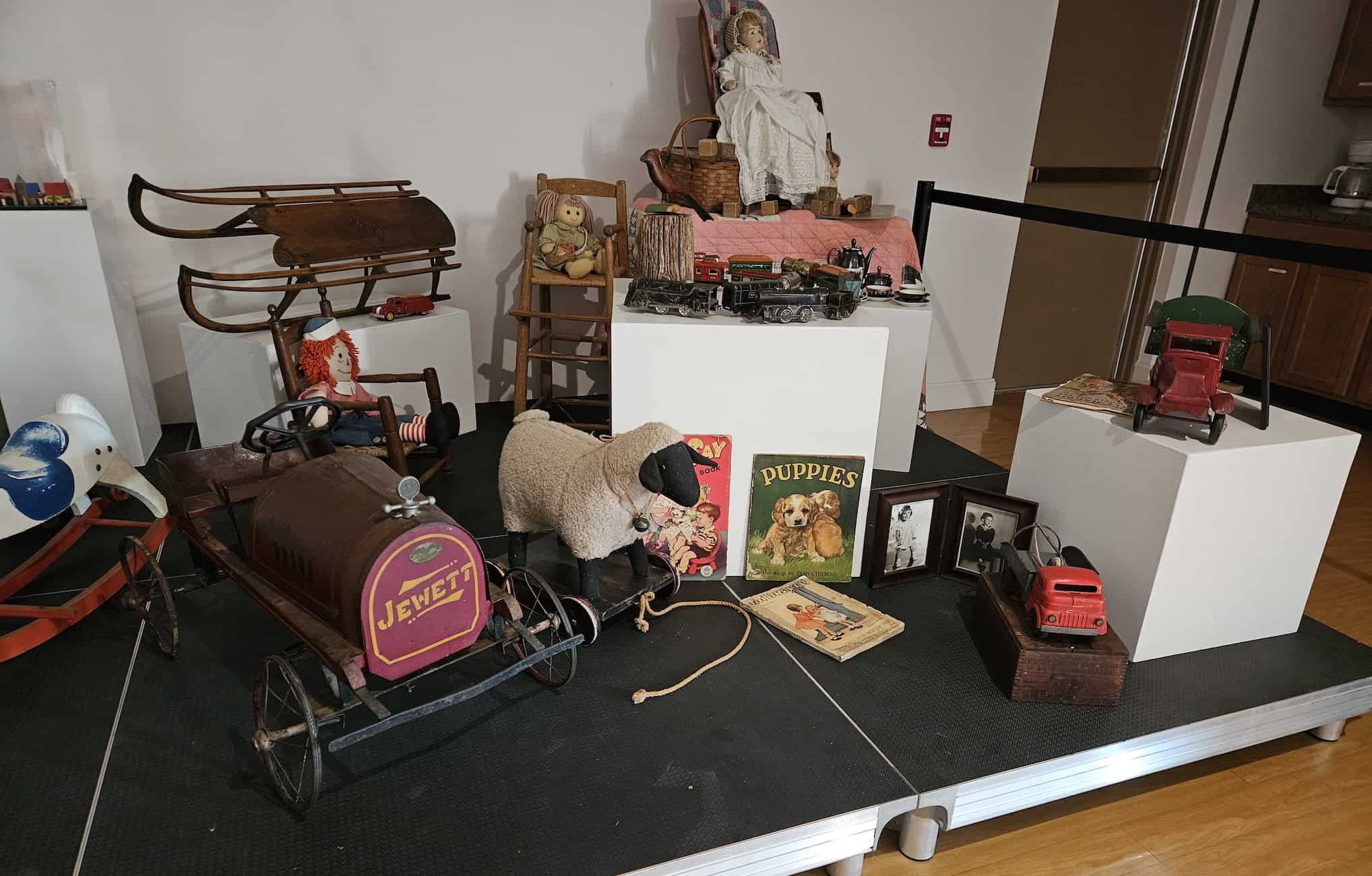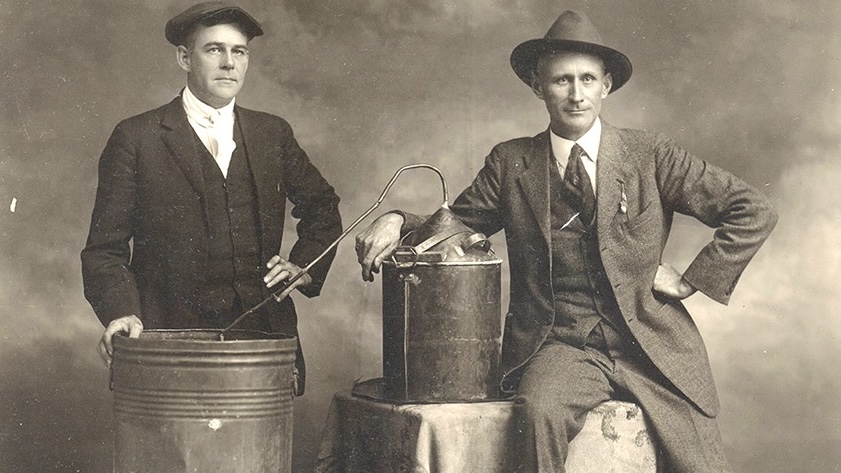The eastbound St. Paul train No. 20 was running an hour late. The Wabash 4–6–0 Ten-Wheeler, a passenger train model typical of the Wabash Railroad, was capable of moderate speeds around 40–55 MPH in service. But this was not usual service, and the train conductor was pushing the limits of the coal-powered engine at 60–70 MPH to make up for lost time.
The Wabash Railroad began in 1837 and mostly served Ohio and Indiana along the Wabash River corridor. As the Midwest’s economy reached further west, so did the railroad, with significant connections sprawling to Detroit and Chicago. The line eventually expanded to St. Louis, Kansas City, and Council Bluffs in southern Iowa, and as far north as Ontario, Canada and the Upper Peninsula of Michigan.
All that expansion came at a cost. Rail lines required significant maintenance. The land under the rails shifted as cold Midwestern winters gave way to spring thaws. American prosperity was demanding heavier and more frequent loads of coal, grain, and steel around the country. Running a railroad was both extremely profitable and extremely costly. To ensure profitability, most railroads kept maintenance to a minimum, preferring instead to spend money on expansion and buying competitors.
Even in the early decades of railroads, a small mention in the Warrenton Banner reported by December 1887, the Railroad Gazette recorded 92 train collisions, 96 derailments, and 7 other united accidents. “A total of 182 accidents in which 71 persons were killed and 211 injured.” Such was the cost of rapid locomotion for a fast-growing country before, during, and after the Civil War.
Ella Tate was sitting in the dining car at the rear of the No. 20 train enjoying lunch with her husband and son. Four other people — including B. Johnson, a Black cook, and Ike Gresham, a Black waiter — were also in the car just before 1:30 on Tuesday, September 6.
The elegant dining car was stocked with a rotating menu of food. Roast beef, ham, spring chicken, lamb chops, and baked salmon were usual dining car entrees. Diners could expect to find mashed potatoes, asparagus, cornbread, rolls, and other late summer vegetables. Pies, coffee, and other drinks were usually always available.
“This train is going too fast for me,” John Nichols remarked to a friend, J.A. Hibler of Macon, MO. Both men sat in the car near Tate. Sensing something, Nichols went outside to stand on the back platform of the rear car, perhaps to enjoy the sights as they passed through Warren County.
Two women, Mrs. G.H. Graves and Mrs. Harriet Curtis of La Plata, MO were in their passenger car, along with about forty other passengers moving around in the rear two cars. Many La Plata, Macon, and Kirksville, MO residents had loaded up in the rear of the train bound for the excitement of the 1904 World’s Fair in St. Louis.
As the conductor blew the whistle just west of Warrenton, the train’s rear dining car and rear cabin car began to vibrate violently.
William G. Focht and his wife of Huntington, Pennsylvania, had come a great distance by rail with his father, all bound for the World’s Fair. He had just looked at his watch when the car started shaking. It was 1:25 p.m.
Nichols, it is believed, felt something was wrong and may have jumped off the platform. But it was equally likely that the 190 psi of steam pressure from the boiler reverberated through the two end cars moving at 60 MPH and flung him off the back platform into a ditch. However he ejected off the back platform, Nichols died instantly as he hit the ground.
Within seconds, the dining car and rear passenger car lurched off the track. The two cars clung together as they rolled down an embankment for over thirty feet, violently breaking away from the rest of the train as it sped onward.
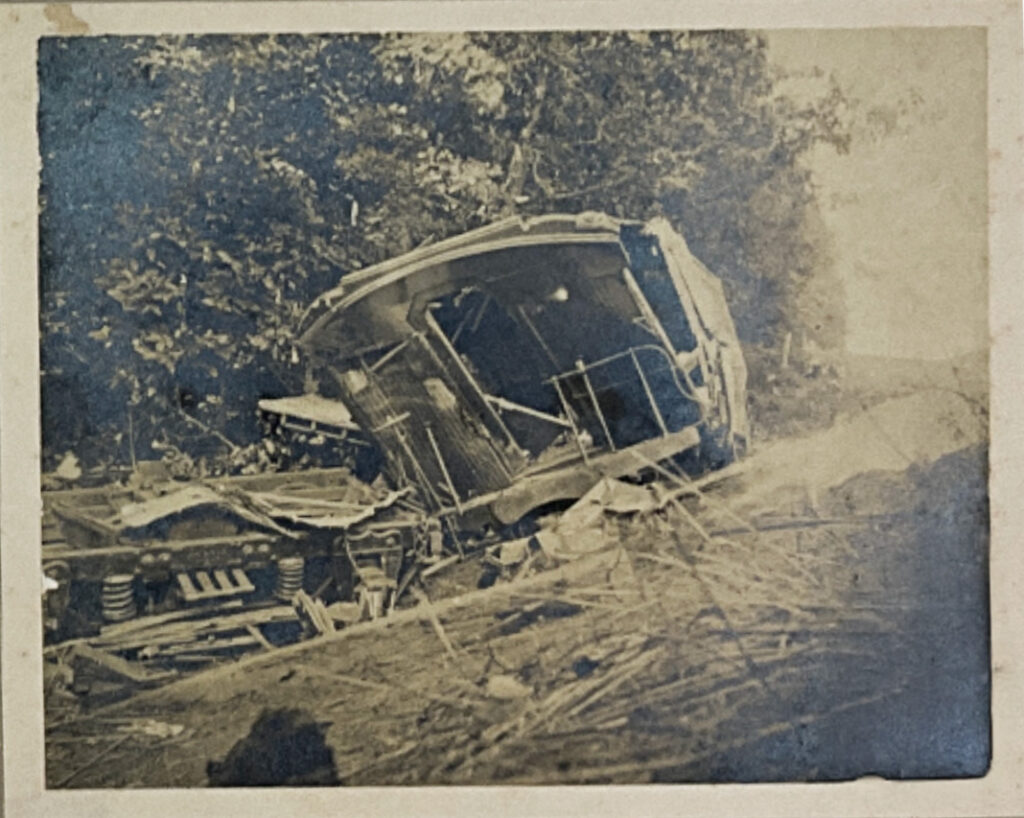
Windows shattered as glass tore into skin like shrapnel. Screams of passengers were shrouded in the uproar of metal and steel grinding into a cascade of twisted metal and bodies. Many of the passengers in the rear car were thrown out of a large hole torn in the car or through the broken windows as it toppled over and upside down.
The ladies from La Plata were separated. Mrs. Graves was immediately crushed under the weight of a rolling car. Mrs. Curtis was also instantly killed by the force.
Mr. Focht hit his head against something — perhaps a metal wall, or a railroad tie — but was able to stagger up within a few moments of the wreck and find his father nearby. His wife, however, was severely injured. Likely suffering from severe pain and internal bleeding, she cried out for her husband who sat beside her and tried to help.
News of the crash spreads fast amid call for surgeons
Despite the derailment of the rear two cars, the engine, five other passenger cars, and a baggage car continued to move forward on the track, carrying about 450 remaining passengers as if no one noticed.
As word spread up to the conductor from the now-rear passenger car, the crew maintained speed until Warrenton, where it stopped to call for help.
According to a report in the September 9, 1904 Warrenton Banner:
“The news spread [around Warrenton] rapidly and many willing hands were soon on hand and ready with bandages, cotton, hot and cold water, blankets, comforts, quilts and everything that would in any way tend to alleviate the sufferings of the injured. The depot platform and waiting rooms were quickly turned into a temporary hospital and the ladies assisted in every way possible to make the victims as comfortable as possible until the surgeons were able to make the rounds.”
In 1904, doctors still made rounds out in the community. Wires and messengers were dispatched to locate as many surgeons as possible. Several local doctors were brought to the nearby Truesdale Depot where the engine had been pulled. Crews removed a single passenger and baggage car. The remainder was loaded with all the supplies and as many physicians as they could find before the Wabash No. 20 set back out to the scene of the wreck while women converted the Truesdale depot into a makeshift hospital.
Railroad operators east and west of the wreck were receiving word of serious injuries. Three Wright City doctors, Dr. Mitchel, Dr. Fleusmeyer, and Dr. Bourland were fetched up on a separate westbound engine and caboose. More doctors from Montgomery City, Jonesburg, St. Charles, and as far as Mexico and Moberly, MO were rushed to the scene. “By eight o’clock, there were twenty physicians and surgeons here working among the mangled,” read a report.
The first physicians on scene found several dead and dozens injured, all in shock, covered in blood, and attempting to help others where possible. Bodies of the living were pulled into a makeshift medical car.
Warrenton was expected to receive the injured. Everyone was ready when the train pulled back into the depot. For the last few hours of that Tuesday afternoon, businesses closed and homes were placed at the disposal of survivors. Injured passengers were put into the care of Odd Fellows and Rebekahs fraternal lodges, at the depot, and in private parlors.
Five trips were made back and forth between Warrenton and the crash site as doctors moved patients and tended to those at the scene. Doctors triaged 8 fatalities and 50 injuries ranging from severe bleeding and head injury to sprains and bruises.
The investigation into the cause of Wabash No. 20’s derailment
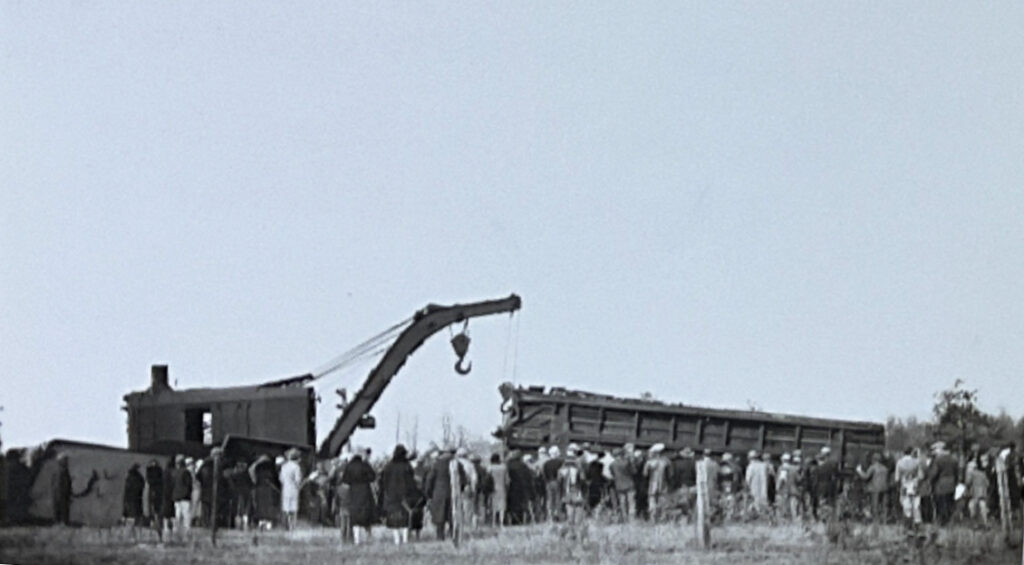
Squire Moore, acting on behalf of the Warren County Coroner, immediately empaneled a jury of six men to view the wreckage and interview passengers. Their inquiry revealed that several passengers thought the train was moving at an unusually high speed, a claim that Conductor Durfield and Engineer Christ Smith did not deny. “The train was one hour late and had lost three minutes on schedule time from Moberly to Pendleton, about a mile west of the wreck. […We] considered the track in good condition,” said the conductor, as if this was business as usual.
A railroad foreman, Charles Archer, was working with a small group of men installing new ties near the point of the accident. He told the panel that a mere 100 feet away, “The ballast at this point was not as wide as it had been.”
The jury investigated the track and found no marks or indentations on the ties where the track first slipped. For about forty feet, they saw no evidence of any issue, and “No flagman was sent out as they did not consider this point so weak that it was necessary.”
The jury was unable to find any reason for the derailment. “The parties came to their death through an unavoidable accident,” they said.
The railroad lawsuit that hinged on signing in the wrong spot
Ella Tate was severely injured when the dining car she was in left the tracks and fell down an embankment. She, her husband, and her son survived, but she claimed a significant long-term impact, citing “loss of services, companionship, and society.” A 20th-century legal euphemism indicating she could not perform her household or social roles, perhaps through mobility issues or disfigurement. She brought a lawsuit against Wabash in the Macon Circuit Court within a few months of the wreck.
Mrs. Tate’s case alleged that the Wabash Railroad was negligent in maintaining the railroad on the trackbed roughly three miles west of Warrenton. Her husband testified to the severity of the wreck.
Eager to settle the lawsuit, the railroad agreed to a $5,800 settlement on January 5, 1905 (approximately $200,000 in 2025 dollars). But the trial court ruled that oral evidence, as mentioned in court, could be used to prove trackbed negligence, even though the original petition alleged “general” negligence. It was believed that something had to have caused the derailment. Despite the Coroner’s Jury’s deadlock on a cause, testimony in court led to the belief that the track was not as wide as it could have been, and thus the only possible cause of the wreck. Wabash attorneys did not want this oral evidence to remain on the record, regardless of the settlement, out of fear it could set a precedent for more oral claims in later cases.
Upon agreeing to the settlement, Mrs. Tate signed the agreement releasing all her further claims against the railroad even as Wabash attorneys prepared a separate appeal challenging the oral evidence in the trial court.
Mr. Tate — who was also a witness in other legislation against Wabash — also signed the agreement, but inadvertently signed his name on a line as a plaintiff in the case. Quickly realizing his mistake, he verbally asked Circuit Court Judge Nathan Shelton to note for the record that he was merely signing as a witness. The Court acknowledged the minor mistake and agreed. Wabash attorneys did not say anything for or against this matter.
The Wabash Railroad attorneys pounced on their appeal. They argued that the lower court erred in admitting evidence about the defective track, and that oral evidence wasn’t enough to prove negligence. Further, they argued that Mr. Tate could not orally clarify that he signed only as a witness. To Wabash, Mr. Tate had — mistakenly or not — released his claims and therefore could not testify in any other litigation. Wabash attorneys were eager to eliminate Mr. Tate’s ability to talk about the wreck.
After six years, the appellate court agreed with the trial court that oral testimony was sufficient because Wabash’s attorneys did not bother to clarify their requests or instructions in the court at the time of the agreement, instead waiting until after the settlement.
It is unclear if that testimony went on to help or hinder further lawsuits. Ultimately, the Wabash No. 20 derailment just west of Warrenton was part of a broader pattern of 20th-century derailments. Substandard rails, inadequate ballast, or unstable roadbeds on secondary, aging, or lightly traveled lines were often the culprits for derailments and would continue to be until better railroad inspections and service was mandated.

